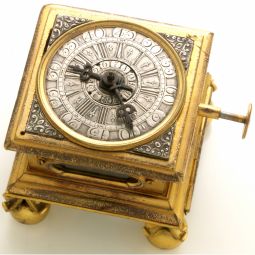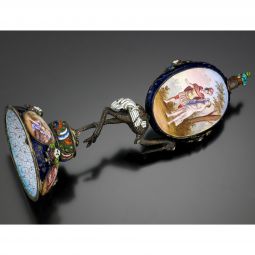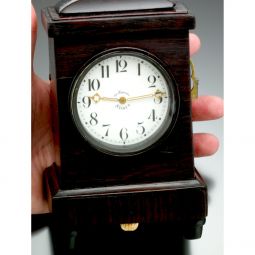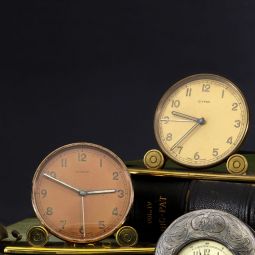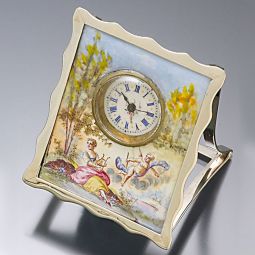Niello Art Deco Silver Miniature Travel Clock
Niello Art Deco Silver Miniature Travel Clock
ITEM-1361$525.00


Product Details
Niello Art Deco Silver Miniature Travel Clock
Unusual to find in niello small size is more desirable. Niello Enamel - the niello watch case became a canvas for outstanding art works that will likely never be duplicated.
Details:
MAKE
Manufacturer: Unsigned
Country: Switzerland
Type: Unisex
Circa Date: 1920s
CASE
Size: 45mm x 45mm.
Style: Hunter swing-out case.
Material: .800 Silver.
Decorations: Features geometric/enamel/niello.
Conditions: C 3-12 (The case is in very good condition, a dent)
DIAL
Color: Off White.
Type: Metal.
Numerals: Arabic Numerals.
Hands: Mercedes radium hands
Conditions: D 3-7 (The dial is in very good condition, slightly oxidized)
MOVEMENT
Jewels: 15 Jewels.
Setting: Stem Set.
Escapement: Lever Escapement.
Material: Gilt.
Layout: Full Plate Layout.
Conditions: M 3 (The movement is in very good condition)
The term niello comes from the Latin word nigellum that is the diminutive of niger (black.) It was a technique used by the ancient Greeks, Romans, Egyptians and Persians. Niello is a black or blackish-blue composition of lead, silver, copper, sulfur and ammonium chloride. The mixture is fused onto an engraved or cut-out metal base by firing the mix in a process similar to champleve' enameling. Silver was the most often used metal for niello objects since the soft white silver color contrasted beautifully with the darker niello. Rose-gold inlay work was also seen in combination with niello and tri-color effects were achieved by the use of rose-gold, niello and silver. When the niello was heated and fired onto a silver watch case, it actually fused with the silver very strongly, almost as if it were soldered in place. The niello would be filled, finished and polished, leaving the surface of the watch case smooth and flat. One can readily assume that the process of engraving the areas which were to be filled with niello, the firing stages, and the finishing stages were very time consuming and therefore costly. Aside from the production end, the niello cases also had to be designed by artists who would pre-determine the subject matter and then the cases were finished by engravers who produced the fine details.

